Nasdaq: Devil take the hindmost
First, please read the Disclaimer.
I am fond off quoting Jesse Livermore's maxim "You don't argue with the tape" but Livermore was a keen student of market conditions and based his decisions on far more than just price action on the ticker tape.
We are witnessing a spectacular stock market rally, driven by retail investors and hedge funds piling into the market while institutional investors are sitting on the sidelines.
The Nasdaq 100 broke through resistance at 10,000, new highs signaling a fresh primary advance. Bearish divergence on Twiggs Money Flow index may warn of selling pressure but it is hard to argue with the tape. Only a fall below 9500 would signal another decline and that seems unlikely at present.
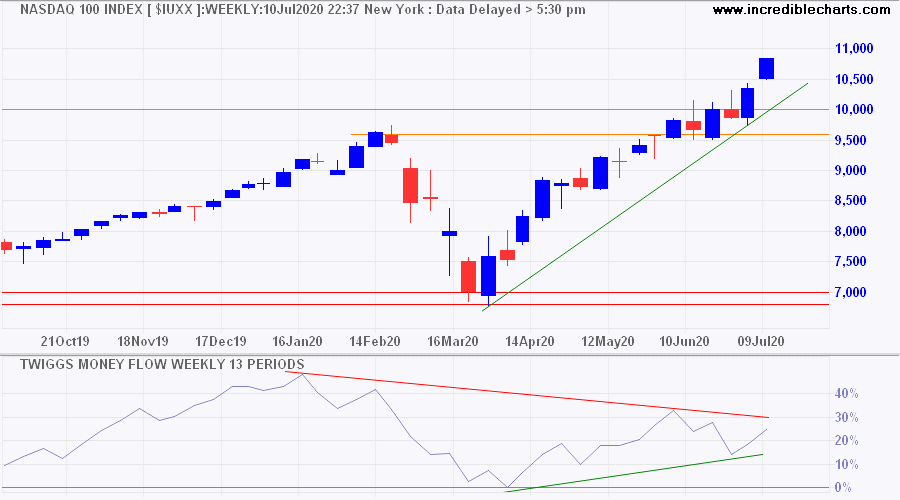
Even retail sales (ex food) have recovered sharply, from -15.3% in April to -1.4% in May (annual % gain).
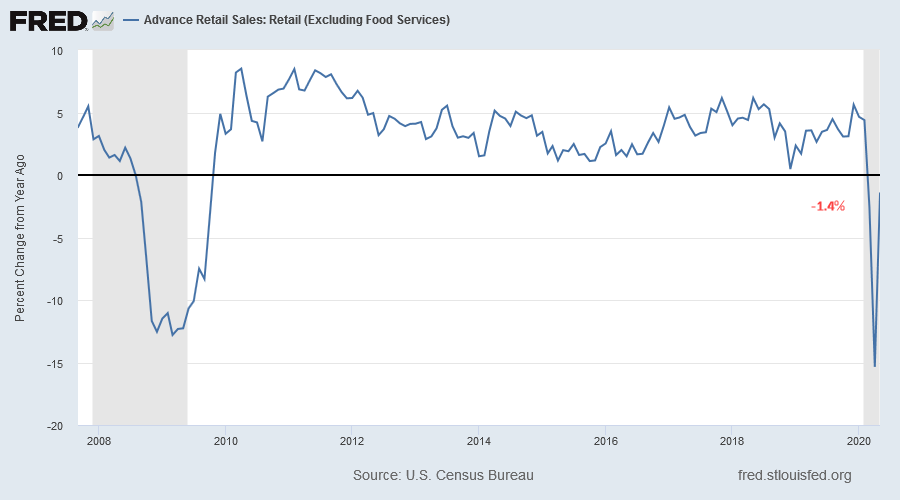
Light vehicle sales are more sluggish but June sales of 13.05 million are still a sizable bounce.
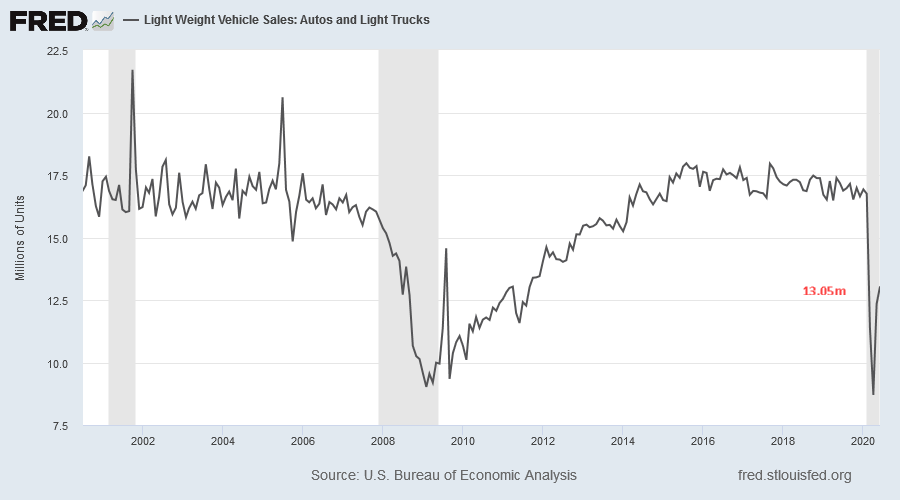
So why are many old investment hands acting with such caution?
We know that the efforts to contain the COVID19 outbreak are struggling, with over 60,000 new cases per day, but the economy still seems in good shape.
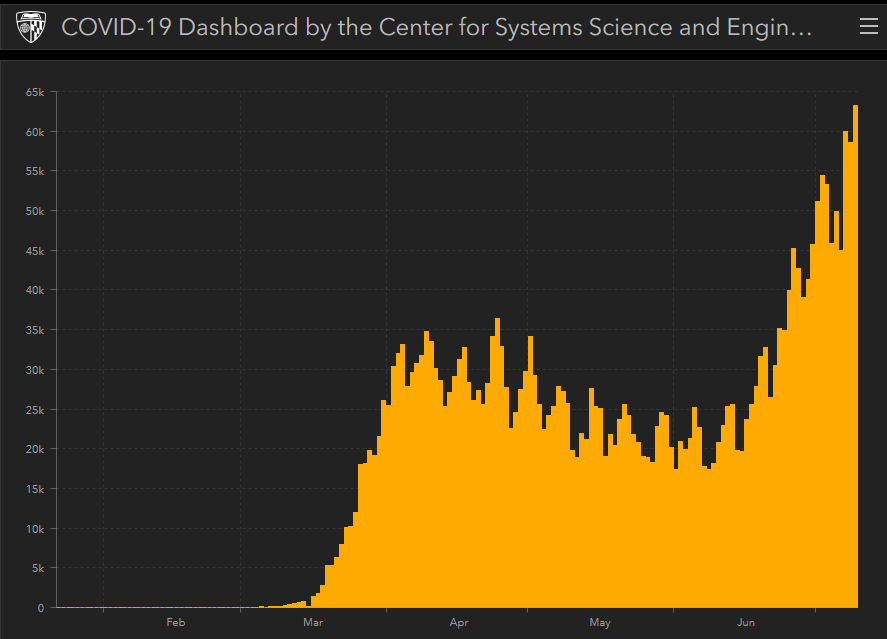
Source JHU CSSE
Let's look at where the money is coming from.
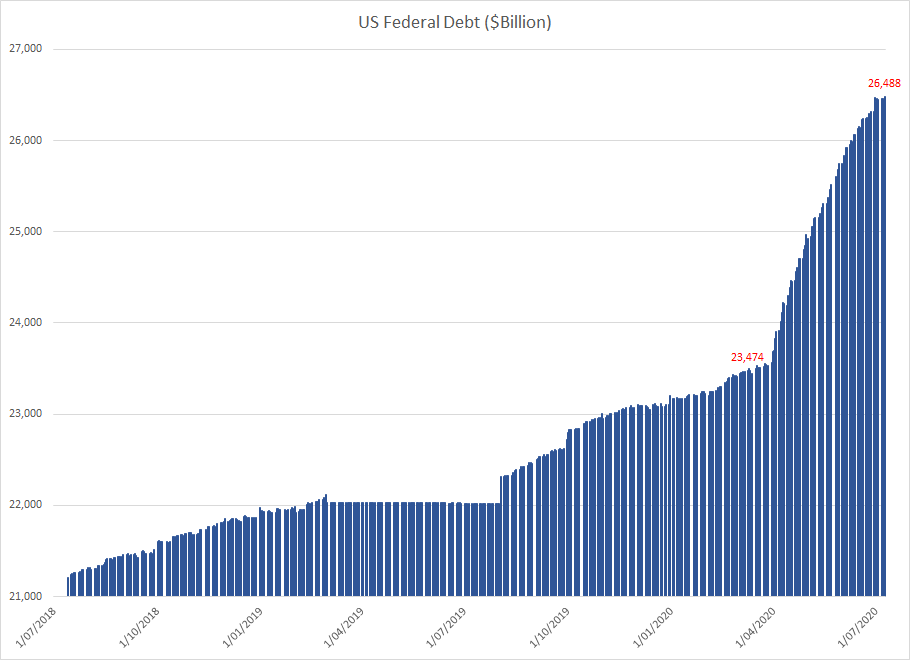
Treasury debt has expanded by more than $3 trillion in the last four months (March 9 - July 9) as the government does everything in its power to cushion the economy from an unprecedented shutdown. Rescuing airlines, bailing out Boeing, emergency business loans, job preservation schemes, and supporting Fed purchases of a wide variety of financial assets to keep the plumbing of financial markets open. Every way they can, government has been flooding the market with money and some of that has found its way to the stock market. Whether through boosting stock purchases, enabling companies to raise debt or boosting consumer spending to buoy up sales, the market is flying on borrowed money.
Steep up-trends like this typically end in a blow-off. A trend is self-reinforcing if rising prices attract more investors who in turn bid up prices even further. A steady influx of new investors is required to sustain the trend, else it dies.
Similar self-reinforcing cycles are evident in nature, where they expand violently outward at an exponential rate until they run out of fuel. The fuel driving the event may differ, from dry tinder in a forest fire, warm ocean temperatures in a hurricane, consumable vegetation in a locust plague, .....or exposed population in a virus outbreak. The cycle expands, feeding on itself, until the fuel is exhausted.
A stock market blow-off is no different. The up-trend will continue for as long as rising prices are able to attract new investors. It will stop when the source of new money dries up. In this case, when Treasury tries to slow the unsustainable growth in federal debt. Then it becomes a case of devil-take-the-hindmost as a preponderance of sellers attempt to offload their stocks on a rapidly shrinking pool of buyers.
"Nobody can catch all the fluctuations. In a bull market your game is to buy and hold until you believe that the bull market is near its end. To do this you must study general conditions and not tips or special factors affecting individual stocks. Then get out of all your stocks; get out for keeps! You have to use your brains and your vision to do this; otherwise my advice would be as idiotic as to tell you to buy cheap and sell dear. One of the most helpful things that anybody can learn is to give up trying to catch the last eighth-or the first. These two are the most expensive eighths in the world."
~ Jesse Livermore
Updates for Market Analysis Subscribers
Please take advantage of our $1 special offer for the first month. Cancel at any time.
Disclaimer
Colin Twiggs is director of The Patient Investor Pty Ltd, an Authorised Representative (no. 1256439) of MoneySherpa Pty Limited which holds Australian Financial Services Licence No. 451289.
Everything contained in this web site, related newsletters, training videos and training courses (collectively referred to as the "Material") has been written for the purpose of teaching analysis, trading and investment techniques. The Material neither purports to be, nor is it intended to be, advice to trade or to invest in any financial instrument, or class of financial instruments, or to use any particular methods of trading or investing.
Advice in the Material is provided for the general information of readers and viewers (collectively referred to as "Readers") and does not have regard to any particular person's investment objectives, financial situation or needs. Accordingly, no Reader should act on the basis of any information in the Material without properly considering its applicability to their financial circumstances. If not properly qualified to do this for themselves, Readers should seek professional advice.
Investing and trading involves risk of loss. Past results are not necessarily indicative of future results.
The decision to invest or trade is for the Reader alone. We expressly disclaim all and any liability to any person, with respect of anything, and of the consequences of anything, done or omitted to be done by any such person in reliance upon the whole or any part of the Material.
Please read the Financial Services Guide.
